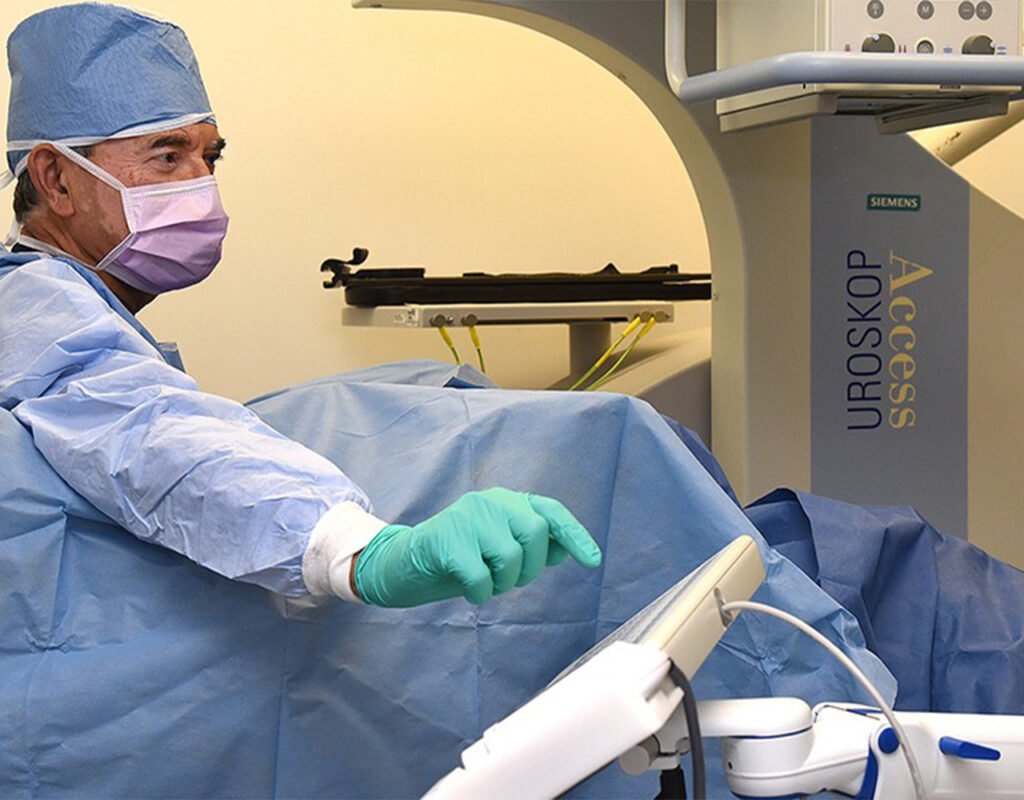Nearly a century ago, surgeons developed a treatment that is still considered the gold standard for benign prostatic hyperplasia (BPH), an age-related condition that occurs when an enlarged prostate obstructs urine flow.
This procedure, offered to men who don’t respond to BPH medications, is called transurethral resection of the prostate, or TURP, and involves removing excess prostate tissue with an electric loop. About 90% of men treated achieve lasting relief, but they also typically need to spend a night in the hospital recovering, and many are unable to ejaculate.
Newer, minimally invasive BPH procedures offer faster recovery times and a lower risk of complications. While a TURP involves cutting directly into the prostate, these alternative procedures treat BPH in other ways — such as using steam, microwaves or lasers to treat the blocking tissue.
Minimally invasive procedures are growing in popularity, and earlier this year another received FDA approval. The Optilume BPH catheter system provided sustained relief of BPH symptoms that lasted even after four years, according to study results presented in April at the American Urological Association’s 2023 Annual Meeting.
The procedure and the study
In an Optilume procedure, doctors insert an inflatable catheter through the urethra, the tube that carries urine from the bladder, toward the prostate. The catheter divides the two halves of the prostate (called the lobes), creating a V-shaped channel in the upper part of the gland that reduces pressure on the urethra and improves urine flow. Importantly, the catheter is coated with a chemotherapy drug, paclitaxel, that helps limit treatment-related inflammatory reactions. After the catheter is removed, the channel remains in the prostate.
Dr. Steven Kaplan, professor of urology at the Icahn School of Medicine at Mount Sinai in New York, led the studies that led to FDA approval. He says symptom improvements with the new system are on par with those with TURP. “We’re pretty excited about it,” he says. “This could be the turning point.”

During the research, Dr. Kaplan’s team measured changes in the International Prostate Symptom Score (IPSS), which ranges from 0 to 35 and classifies BPH as mild, moderate or severe. According to results from the first clinical trial, the PINNACLE trial, which was limited to men with prostate sizes between 20 and 80 grams, Optilume treatment produced immediate benefits. After one year, the IPSS scores of treated men were on average 11.5 points lower than those reported at baseline.
Follow-up and commentary
Follow-up assessments for men who participated in the second clinical trial, the EVEREST trial, are ongoing. However, results to date – again for prostates weighing no more than 80 grams – show that IPSS scores have dropped from 22.5 at baseline to 11.5 four years after treatment, with no significant change in ejaculatory function.
“Over the years, numerous innovative treatment alternatives for BPH have emerged,” says Heidi Rayala, MD, a urologist at Beth Israel Deaconess Medical Center, assistant professor at Harvard Medical School, and member of the editorial board of the Harvard Medical School Annual Report on Prostate Diseases. “TURP remains the benchmark because many initially promising technologies have failed due to loss of efficacy over time. Nevertheless, newer advances such as Optilume offer exciting prospects of longer durability with fewer side effects.
“It is important to note that the effectiveness of Optilume varies depending on prostate size and patient symptoms. “Matching the appropriate surgical approach to the individual patient will continue to be critical as patients and their urologists evaluate the optimal choice within the spectrum of minimally invasive therapies.”

